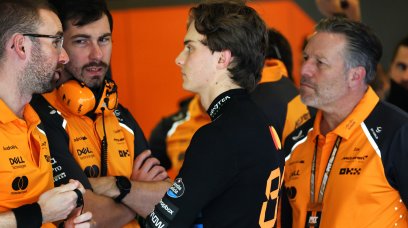RacingNews365's Dieter Rencken was left impressed by Mercedes' performance in Bahrain, expressing surprise at how much rear downforce the World Champions recovered in a short space of time ahead of the season opener. Mercedes looked erratic in pre-season testing, with a wayward rear end that resulted in plenty of spins and tail-happy moments for Lewis Hamilton and Valtteri Bottas. With the aero regulations tweaked over the winter, cars with a 'low-rake' design, like Mercedes and Aston Martin, appeared to have time to the 'high-rake' cars like the Red Bull. "I wasn't surprised that Mercedes managed to claw some time back," Rencken said on the RacingNews365 podcast. "Not at all. That's basically what race teams do and Mercedes is an excellent race team. So I wasn't surprised they've been able to claw some time back, but I was surprised at how much they've been able to claw back. "Particularly in view of the fact that the the 2021 technical regulations make it more difficult for what we call a 'low-rake' car to to recover, whereas the high-rake cars hadn't lost as much downforce on a pro rata basis as the low-rake cars." A car's rake refers to the car's angle of attack, and the height of the rear floor in relation to the ground. A higher rear ride height means more area under the car, resulting in a greater diffuser effect and more downforce. A low-rake car, like the Mercedes, is more level with the ground. Regulation changes over the winter resulted in a simplification of the floor rules but, with the cars this year originally designed for the 2020 regulations, it has resulted in these unforeseen drawbacks for some of the teams. "So when the FIA cut back on the floor dimensions, they obviously did that to reduce the downforce," Rencken explained. "Pirelli were concerned about the stresses on the tyres, which incidentally, would have gone into their third year as they were 2019 tyres retained over for 2020. And the plan had been to retain these for 2021. "Accordingly, the FIA said we'd need to reduce downforce. Subsequently, Pirelli said 'Look, we'd prefer to bring a beefed up tyre' but, by then, the reduced downforce regulations were in place already. "This then meant that the the higher rake cars, pro rata, lost less downforce because of this greater under floor area. Therefore, I was surprised that Mercedes had, with their low-rake design, been able to recover as much as they did. "Tellingly, they recovered a lot more than the Aston Martin which, as we know, that the Racing Point design is effectively a self confessed photocopy of the Mercedes [from 2019], and therefore also a low-rake car. "Mercedes recovered a lot more than Aston Martin did." Check out the new episode of the RacingNews365 podcast with Dieter Rencken and Thomas Maher below!
Most read







